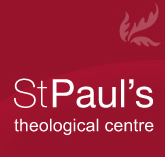Book Review: AD 33: The Year that Changed the World

Duriez Colin. AD 33: The Year That Changed the World. Downers Grove, Illinois: IVP, 2006
165 pages.
$22.
ISBN-13 978-0-8308-3396-2
My thanks to the kind folk at InterVarsity Press for a review copy of Colin Duriez’s AD33.
It won’t be a surprise to learn that AD 33 is a book about a year! It is a wide sweeping look at the world as it then was. In particular it focuses upon two main characters – a Roman and a Jew, namely Jesus and Emperor Tiberius. In the book Duriez will draw illuminating parallels between these two characters and about their different kingdoms and claims. However, to do that he must take a big step back into the world of AD 33, a task very close to the heart of the book. Duriez wants to take the readers hand and lead him/her into that ancient, different world in order to make it as tangible and clear to the imagination as possible. As with all good teaching, Duriez manages not only to do this smoothly, but he also manages to avoid getting lost in details. He slowly works his way through the year (starting in chapter 3: ‘The Road of Courage: Jesus of Nazareth, Early Spring’, up to chapter 13 ‘Agrippina, Sunday October 18’), and his span of vision encompasses the events near Jerusalem, Rome, the whole near east, and even the wider world (chapters 8-10). Not only is Duriez’s scope geographically broad, but he also manages to engage a wide range of modern scholarship and ancient sources. This book, then, is a doorway into the world of A.D. 33, a year, of crucial significance not only for Christians, but for the whole world.
When the terrain of a book traverses such a land at such a time, responsibly drawing on many sources as it does, one needs to be able to write well. Thankfully, Colin Duriez is a professional writer, and was for many years general books editor for IVP (perhaps you have heard his name before through his many works on C.S. Lewis). Not only that but included in the book are numerous maps, diagrams and chronological charts to help orientate the reader. The many short fictional scenes and dialogues interspersed through the book help the reader to enter into the world Duriez paints. This of course also spices things up a little for the reader.
With all of that in mind, it can be affirmed that this book is an informative and educational read. Indeed, not only will the student learn much from its pages, but it will be of interest to the scholar as well. Duriez really tackles the primary and secondary literature head on, and lays matters out helpfully and clearly. Admittedly, his handling of the primary sources was at times a little too uncritical for my tastes, and his general sympathy for a certain sort of secondary literature (conservative) may put some off a little, but you have to admire his grasp of the primary literature. And as Martin Hengel has put it: ‘[Biblical] Scholars should read more ancient texts and less hypercritical and scholastic secondary literature’ (in Paul Between Damascus and Antioch, [SCM, London: 1997] p.11)!
All in all, a good read - but especially for the non-expert interested in getting a better grasp of the historical situation at the birth of Christianity.
Labels: Book Review








0 Comments:
Post a Comment
<< Home